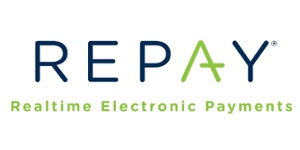Purpose and Usage
Amortization is a tool used in the financial industry to defer the recognition of income or expenditures over time. This can be dictated by regulatory needs to determine how much should be rebated to a customer if the loan pays off prior to maturity as well as how much income or expense should be earned if the institution is required to defer those amounts for financial purposes. As we have worked with finance companies in the industry, we have learned that institutional earnings are completely unique to the institution. As much as finance companies believe they are exactly like their competitors, the way they record their recognition of income and expense to the general ledger software is unique. We have not found any institutions that recognize their deferral of income and expense using the exact same method. In addition, state regulations also dictate how prepaid charges and insurance premiums should be refunded should the customer close his loan early, which necessitates the system is being flexible enough to accommodate new methods of amortization in the future.
There are a few key factors that drive amortization:
- The method to dictate how much should be earned in a specific period
- The point in time when the next earned period should be recognized as well as the variations to drive those time periods/li>
Potential Earnings/Rebate Methods
Amortization methods determine how much should be earned over time. For some methods, this amount could be the same for each period recognized, whereas other methods earn most of the fees in the early stages of the loan and decrease the amount earned per period as time elapses. How the method should calculate the amount of the rebate is primarily due to state regulations. How the institution should calculate the amortization of earnings is based on a couple of factors:
- Financial Auditors – If the amount of the earnings/expenditures become significant, financial auditors may require an institution to defer their earnings using a specific method. This allows the amortization to be spread over the life of the loan instead of recognizing the entire amount at origination. The goal in deferring the earnings is to prevent large peaks and valleys on the financial statements.
- Tradition/Prior Data Processor – Many institutions currently earn based on some method they have been using for many years. They may not fully know how the method works, but their finances are so deeply ingrained into using this method, they have little movement in migrating to a new method. If they are using a method they do not understand, they will not be able to successfully explain to their financial auditors how they are calculating the recognition of earnings/expenses. This becomes even more difficult if they change systems and try to match an amortization method they do not understand.
Here are some examples we have seen in the industry of how deferrals are earned:
- Rule of 78s/Sum of the Digits
- Monthly Prorate
- Daily Prorate
- APR Based Actuarial
- State Contract Rate Actuarial
- Rule of Anticipation
In the end, it is the responsibility of the institution to determine how their revenue and expenses should be recognized. It is in their best interest to understand how they amortize to their general ledger. If they do not understand the method, they should reach out to their data processor for documentation on how their method works.
Point of Time
With every amortization, there is a point in time which determines when the next period can be earned. These are critical for earning recognition and regulatory purposes. The frequency of the loan can play a major factor when the earnings and refunds are affected. Here are some standard industry rules that dictate when an account can earn:
- Daily – If you are using a daily method, this value can change from day to day. For most daily methods, this starts at the effective date of the loan or policy.
- Monthend – For most earnings methods, month end is the point in time designated to earn. This is primarily due to financial earnings being reported monthly. For refund methods, this is usually notthe ideal time to determine the refund reduction from one month to the next.
- Anniversary of Date Opened – For many state regulations, refund methods cannot be earned until afterthe anniversary of the date opened. For example, if the loan open date was 10/27/2018 and the loan frequency was monthly, the next refund reduction date would be 11/28/2018. It would follow this pattern until there is no refund amount remaining.
- Anniversary of 1st Due Date – This is more conservative than Anniversary of Date Opened if the account has an extended first payment period (i.e., open date = 10/27/2018; first due date = 12/05/2018). If the account had a first due date of 12/05/2018, the next anniversary earnings date would be 01/06/2019). It would follow this pattern until there is no refund amount remaining.
Variations to Earnings
There are some variations and conditions to earnings that will affect the point in time of rolling from one period to the next. There are also some special rules for loans that pay off in the first period that follow a different method. Lastly, delinquency on a loan can determine how a loan amortizes. Below are some variations to be aware of:
- 15/16 Day Rule – Most non-daily methods follow a 1-day rule, meaning the first day an account is open, one period’s worth of earnings is recognized. For some state regulations, this is too aggressive. With a 15/16 Day rule, ½ month needs to have passed from an anniversary rollover period before the next period is earned. For example, if the loan were opened on 10/05/2018 and used the Anniversary of Date Opened with a 15/16 Day Rule, it would be 16 days from the open date (10/21/2018) before the 1st month is earned. Each month would follow suit on the same anniversary day. Similar less frequently used methods are 3/4 Day Rule (weekly frequency), 7/8 Day Rule (bi-weekly and semi-monthly loan frequencies), 14/15 Day Rule (monthly frequency), and 16/17 Day Rule (monthly frequency). If you were looking for the most conservative monthly refund, you would use the Anniversary of the 1st Due date with a 15/16 Day Rule.
- X Day Rule – This is a more aggressive situation. In certain states, you can earn a certain number of days ahead of the anniversary rollover date. This is true in the state of MS with their precomputed interest. They allow five fewer days to determine when the next month should be earned.
- First Period Earnings – Under certain regulations, the time between the opening date and first due date of the loan can follow a separate independent refund method. For example, if the loan was using a Rule of 78’s calculation for determining the life of loan refund, the loan could use a different method if the customer paid off the loan early in the first period and calculated based on a straight-line/prorate basis. If the loan is paid off after the first due date, the refund will use the standard Rule of 78’s calculation. You also must be mindful that some of these rules are used only if the loan is paid off as a renewal. Cash/check payoffs may not invoke the special rule.
- Free Look – For certain insurance policies, there is a free look period. If the customer cancels their policy within a certain number of days (i.e., 30), the customer is entitled to a full refund of the insurance premium.
- Delinquent Stop to Amortization – If the loan gets to a point where the customer stops making payments, some institutions are required to stop earning the deferred amounts until the loan becomes performing again. This is usually mandated by the financial. If the account becomes charged-off, most institutions will recognize the remaining deferred amounts in the period the loan is charged-off.
Conclusion
With multiple variations and rules that control amortization and refund methods, these can make calculations difficult and complex. For state regulations on refunding, the documentation is not clearly disclosed, forcing the institution to take a more conservative approach to refund for fear of getting cited. This amounts to a potential loss of revenue for the institution. Some institutions have opted to migrate their loan portfolios to interest-bearing accounts and not deal with the complex issues of amortization and refunding precomputed interest. In either case, it is recommended for the institution to keep a matrix of the following:
- For each product in each state, document how you earn for each deferral. Document how your methods amortize, so you have a record for your auditors if they ever ask how you currently earn your deferrals.
- For each product in each state, document the method of refund used. This documentation should show the refund method, point in time when the refund amount changes, and any special rules or variations that control how the account rebates back to the borrower.
If you have questions regarding the methods available, please reach out to your data processor. They should have documentation on the methods available and how those methods amortize.





